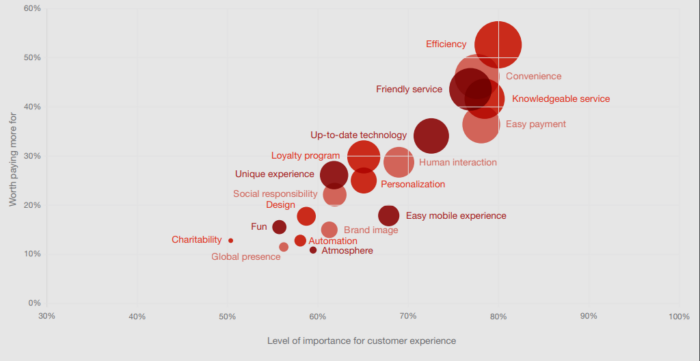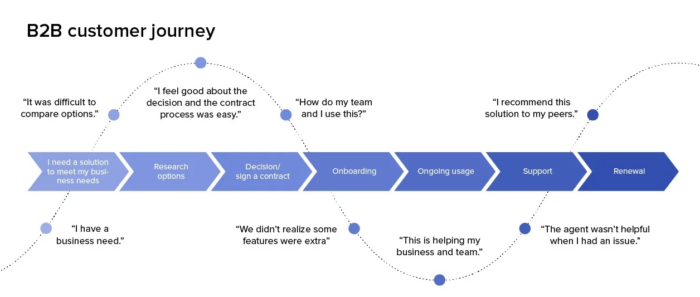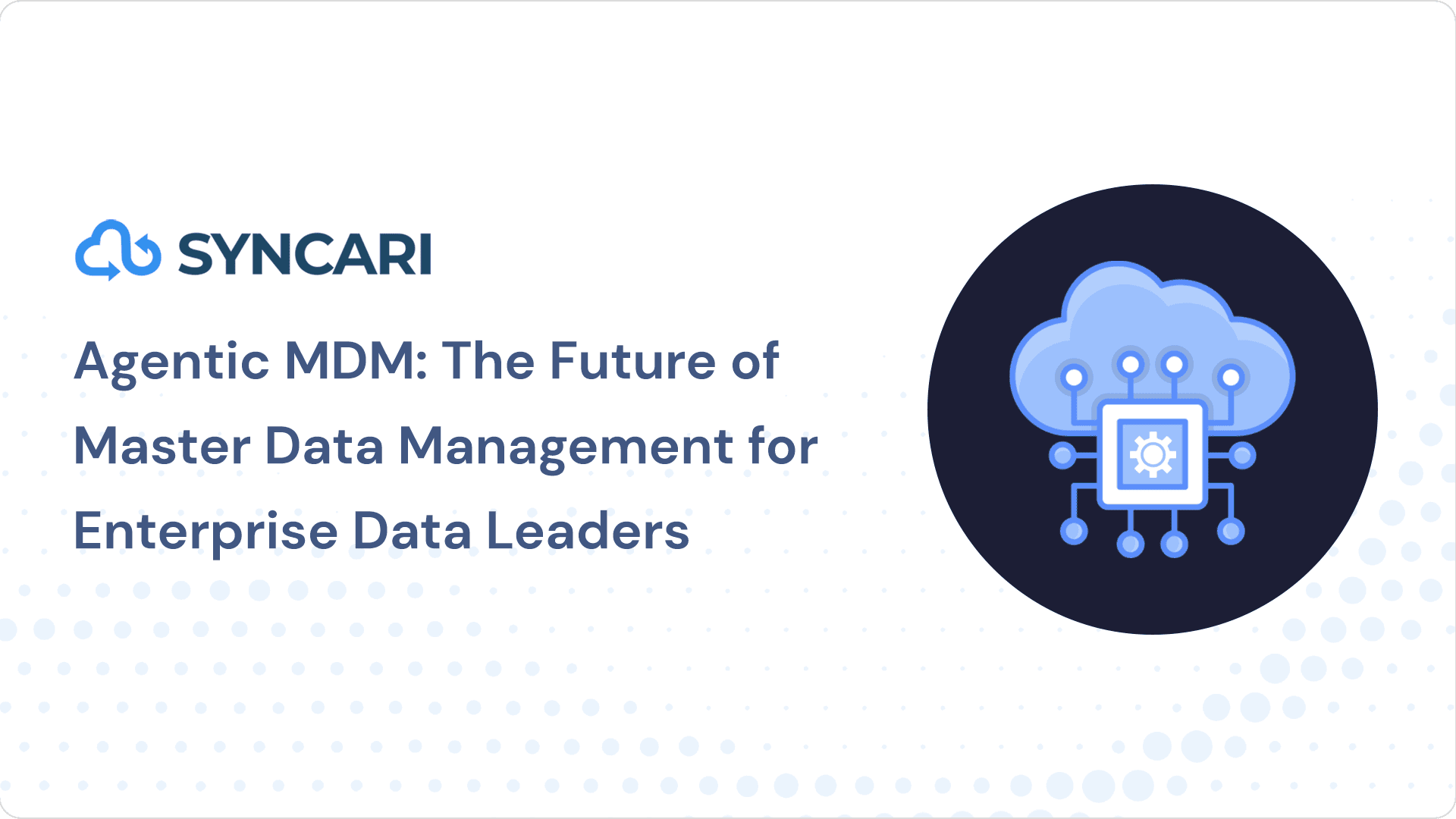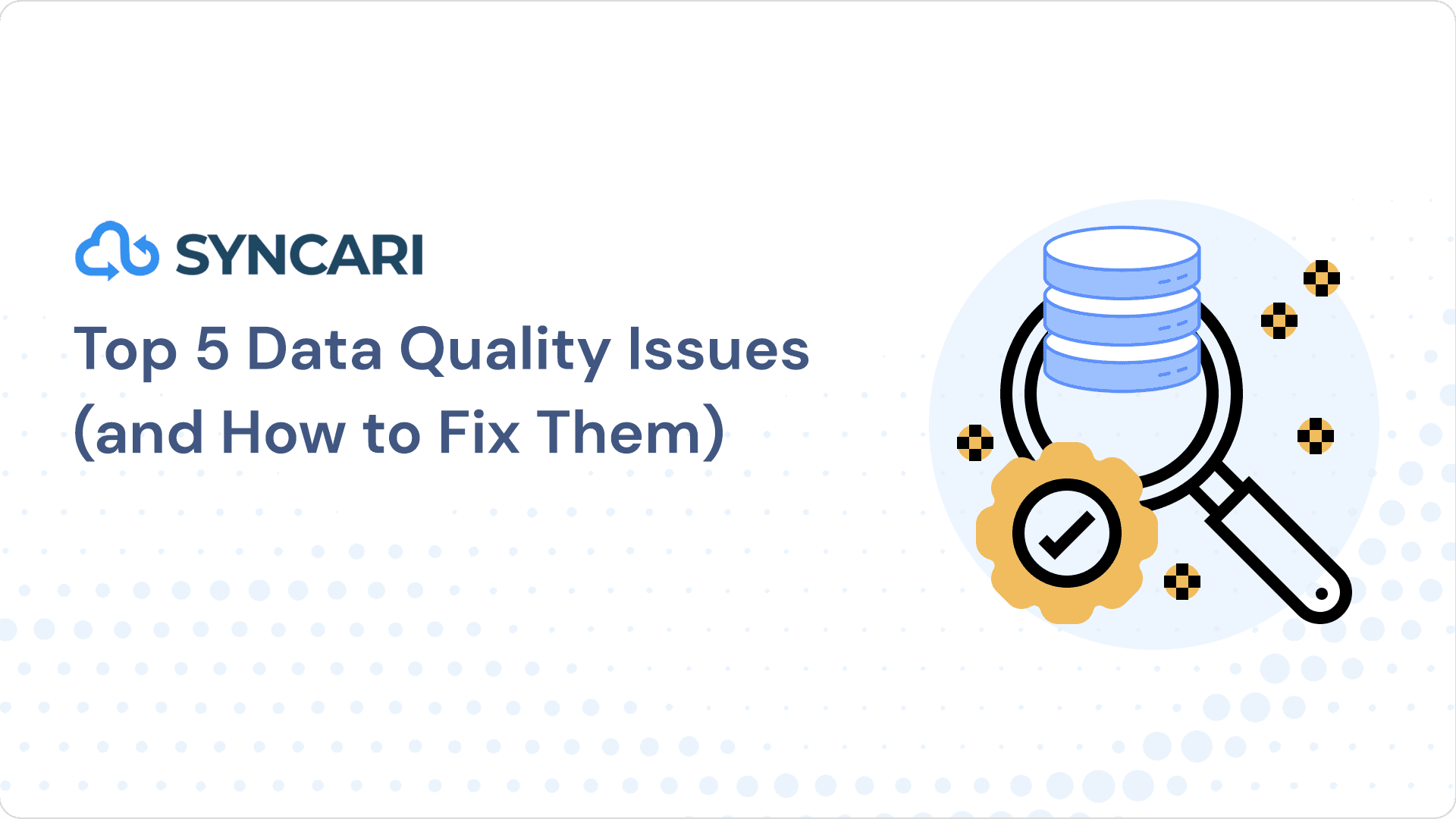Imagine this – you’ve meticulously set up systems to collate the essential B2B customer data model required to steer your RevOps and MOps objectives. Yet, despite these efforts, you find yourself unable to obtain a comprehensive 360-degree view of the intricate touchpoints that chart a customer’s progression through the sales funnel. This is the “B2B customer journey.”
The result is a cascade of inefficiencies: campaigns that miss the mark, lead engagement metrics that offer a skewed perspective, and most critically, the oversight of valuable opportunities to cultivate long-term customer relationships. This deficiency not only impairs brand loyalty and customer retention but also hampers the potential for sustainable business growth.
In this blog, we’ve explored the ins and outs of the B2B customer journey – discussing its relevance, benefits, and value to key stakeholders, while also highlighting the added importance of using data management automation tools to navigate it effectively for a more sustainable outcome.
Importance of Customer Journey Touchpoints for B2B Companies
“A satisfied customer is the best business strategy of all.” This adage could not be more true in today’s modern business landscape. The concept of B2B customer journey touchpoints has become the crux for company growth and success. From startups to well-established enterprises, comprehending the B2B customer user journey has become imperative for driving growth, enhancing customer experiences, and making informed business decisions.
Watch: Create a Seamless B2B Customer Journey with These Three Tips
A survey by Salesforce underscores the growing significance of comprehending customer journey touchpoints, with 80% of B2B customers expecting real-time interactions. This understanding of the B2B customer journey yields a host of benefits, including:
- Enhanced customer retention through proactive pain point resolution.
- Optimized marketing efforts that allocate resources efficiently.
- Streamlined sales processes leading to shorter cycles and higher conversion rates.
- Informed product development that meets precise customer needs, and ultimately, higher customer satisfaction.
To fully leverage the potential of each stage in the journey, check out this comprehensive guide on 5 Steps to market at each stage of the buying decision process. This blog dives deep into actionable strategies you can implement to ensure your marketing efforts resonate at every critical point. Whether it’s raising awareness or sealing the deal, these steps will help you navigate the journey with finesse.
The Added Value of an Exceptional B2B Customer Experience
Delivering a superior customer experience (CX) is no longer an optional pursuit; it’s a competitive necessity. The B2B customer landscape is shifting towards an experience-driven paradigm. Research from PwC reveals that 73% of B2B buyers point to CX as an essential factor in purchasing decisions.
What people value most in their customer experience
 Source: pwc
Source: pwc
When companies invest in understanding and optimizing B2B customer journey touchpoints, they are better equipped to deliver value at every stage, thus enhancing overall customer satisfaction and loyalty. Here’s how it brings value to different stakeholders in the company:
- For marketers, it’s the blueprint for tailored strategies that resonate at every stage and drive conversions.
- Sales teams leverage these insights to forge personalized pitches that build trust and close deals efficiently.
- Customer success teams proactively engage with clients, armed with touchpoint knowledge, to deliver solutions that matter.
- Business owners use touchpoints as a lens to prioritize investments, ensuring customer satisfaction and revenue growth. B2B startups gain an edge by swiftly adapting based on touchpoint analysis
- Marketing Operations (MOPS) specialists fine-tune campaigns using touchpoint data.
Unpacking the B2B Customer Journey
Unlike B2C interactions that are often linear, B2B customer journeys are multifaceted and more dynamic. A typical B2B purchase involves various touchpoints, from initial research to vendor selection, negotiation, procurement, and post-purchase support. Each touchpoint is a potential turning point that can influence the customer’s perception and decision.
The Customer Journey in B2B
For instance, imagine a multinational corporation seeking to enhance its cybersecurity infrastructure. The customer journey in this case involves several touchpoints:

Source: apizee
Awareness Stage: Your goal at this stage is to provide value through educational content. Understand your audience’s pain points and create informative content that addresses these issues. This could be in the form of blog posts, whitepapers, or videos that offer insights and solutions without pushing your product. You can use a video editor tool, to enhance your video content even further.
At this stage, the company becomes aware of the increasing threats in the digital landscape and realizes the need for robust cybersecurity.
Research and Consideration: During this phase, prospects are actively researching and comparing different solutions. Your role is to provide in-depth information that helps them make informed decisions. Case studies, comparison guides, and expert opinions can showcase your authority in the field. Remember, the focus should be on guiding, not selling.
Creating a customer journey map at this stage is an important step:
Crafting an impactful B2B customer journey map hinges on several key factors:
- Direct your efforts towards personalized sales interactions, tailoring approaches to individual customer preferences.
- Secondly, curate content that delivers substantial value to your audience, positioning your brand as an indispensable resource.
- Embrace innovative marketing tactics, continually experimenting to adapt to evolving market trends.
- Employ omnichannel strategies to seamlessly guide prospects through various touchpoints, enhancing engagement and conversion rates.
- Notably, prioritize customer retention alongside acquisition, fostering lasting relationships
Evaluation and Decision: In the decision phase, prospects are narrowing down their options. Here, you need to emphasize the unique value your product or service brings to the table. Provide detailed product information, address common objections, and offer personalized consultations if possible. Highlight how your solution solves their specific pain points better than alternatives.
At this stage, the company evaluates various cybersecurity providers, considering factors such as scalability, integration capabilities, and compliance with industry standards.
Purchase: After careful evaluation, the company selects a cybersecurity provider that aligns with its needs.
Implementation: Once the decision is made, the implementation phase begins. This is a critical stage where the transition should be as smooth as possible. Provide clear onboarding instructions, training materials, and dedicated support. The goal is to make the customer feel confident and comfortable with their choice.
This is where the chosen solution is integrated across the organization’s networks and systems.
Post-Implementation: Customer satisfaction doesn’t end with implementation. Check-in regularly to ensure everything is running smoothly and address any concerns promptly. Offer resources that help customers optimize and maximize the value of your solution. This is also a great opportunity to gather feedback for improvements.
Fostering Long-term Partnerships: Happy customers can become your most effective advocates. Encourage and facilitate their success stories. Consider creating a community where customers can share their experiences and insights. Word-of-mouth recommendations carry significant weight in the B2B world.
According to a survey by Salesforce, 83% of business buyers strongly agree that tech has contributed significantly in keeping them more informed of consumer product choices, eventually leading to better customer loyalty & retention.
The Evolving B2B Customer Journey in 2023 and Beyond
In 2023, the B2B customer journey is undergoing significant shifts driven by technological advancements, changing buyer behaviors, and global events. Businesses must adapt to these changes to stay competitive and relevant.
- Digital Transformation: The integration of digital technologies has expedited the customer journey, allowing buyers to access information, interact with businesses, and make decisions more efficiently.
- Hyper-Personalization: B2B buyers now expect experiences tailored to their specific needs. AI and data analytics enable companies to analyze buyer behaviors and preferences, offering personalized recommendations and solutions.
- Virtual Engagement: Virtual events, webinars, and online demonstrations have become crucial touchpoints, especially in industries where face-to-face interactions were once the norm.
- Sustainability as a Touchpoint: As environmental concerns grow, B2B buyers are incorporating sustainability considerations into their decision-making process. Businesses that can showcase their commitment to sustainability gain a competitive advantage.
- Collaborative Decision-Making: B2B purchases often involve multiple stakeholders. Therefore, touchpoints must cater to the information needs of various decision-makers within the organization.
Top 4 Customer Experience Trends in 2023
CX Data Management Tools for B2B Companies: Do we really need it?
This is certainly not the “D-I-Y” Era anymore. Manual tasks are taking a backseat, while AI and big data are taking over the modern business world.
Think about it: B2B companies have a lot on their plates, with many points of contact, different types of customers, and heaps of data to deal with. Navigating this intricate web of customer touchpoints can be a daunting task. This is where technology steps in.

Source- sfdcstatic
Today’s businesses leverage automated tools for data collection and analysis to drive data-driven decision-making, uncovering valuable insights. These tools aid in identifying patterns and trends, refining strategies, and enhancing customer experiences. From the customer’s viewpoint, technology should seamlessly provide user-friendly interfaces and swift access to vital information, underlining the significance of speed and convenience in their overall experience.
HubSpot, as a prime example, has recognized the critical role of technology in the B2B customer journey. They’ve embraced customer-centricity from the outset, continually refining their services based on genuine customer needs. One notable feature is their proactive chatbot-powered support, simplifying onboarding and communication, while seamlessly blending technology with a personal touch.
Here’s a success story: Outco leveraged Hubspot to increase its Return On Ad Spend (ROAS) and experienced seamless software integrations with fractional CMO. Read more.
Wrapping up our journey with the B2B Customer Journey
Mastering the B2B customer journey is an ongoing process that requires a deep understanding of your audience’s needs and behaviors. By focusing on providing value, building trust, and nurturing long-term relationships, you can create a journey that resonates with your customers and drives success for your business. Remember, every interaction is a chance to demonstrate your commitment to solving problems and delivering value. Leveraging print-on-demand to enhance the B2B customer journey underscores a commitment to tailored solutions and value.
Understanding these B2B customer journey touchpoints is no longer a choice—it’s a strategic imperative that defines the success of companies. From technology giants to small-scale service providers, the dynamics of the B2B customer journey offer insights that guide marketing, sales, customer service, and business strategies.
As you navigate this landscape, Syncari’s B2B customer data platform can be a valuable asset to your CX tech stack. With the ability to pinpoint gaps, assess effectiveness, and refine customer journey touchpoints, Syncari assists in creating a B2B user experience that resonates with your audience to drive greater revenue growth.
Embrace the power of optimized touchpoints and elevate your B2B customer journey to new heights by leveraging the guidance of a specialized MOps team like fractional CMO to help efficiently drive your RevOps and MOps initiatives.
Now, your business can create a journey that not only engages customers the RIGHT way but also propels sustainable growth!


